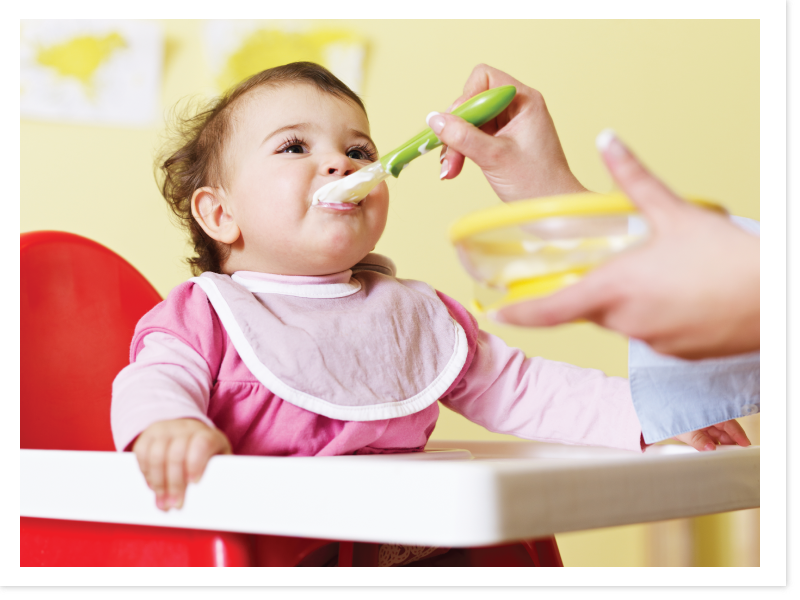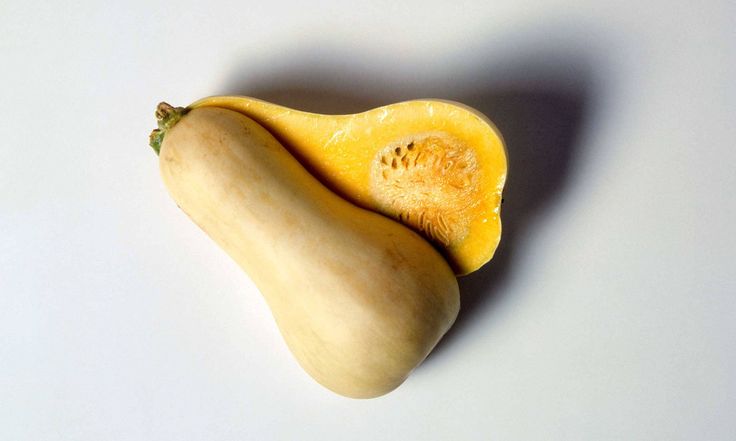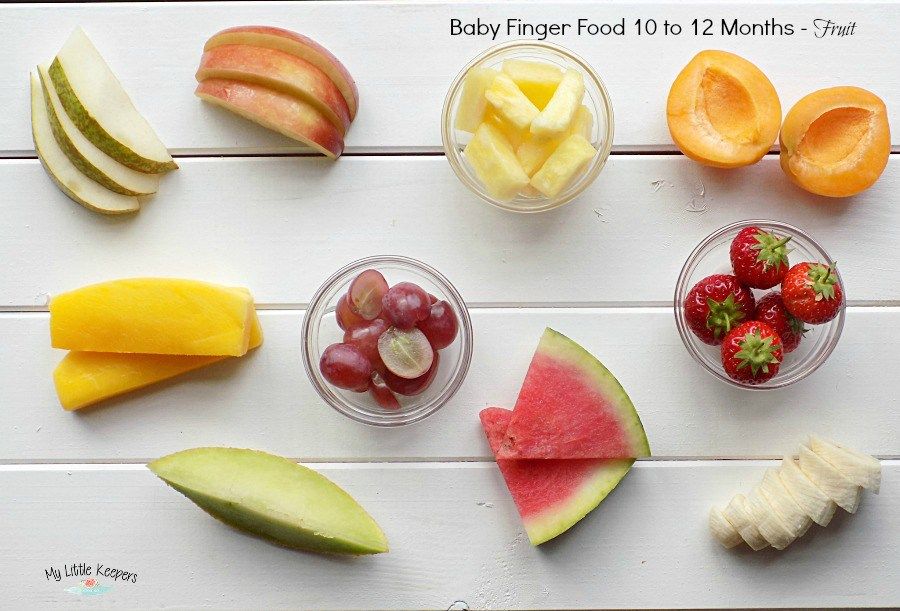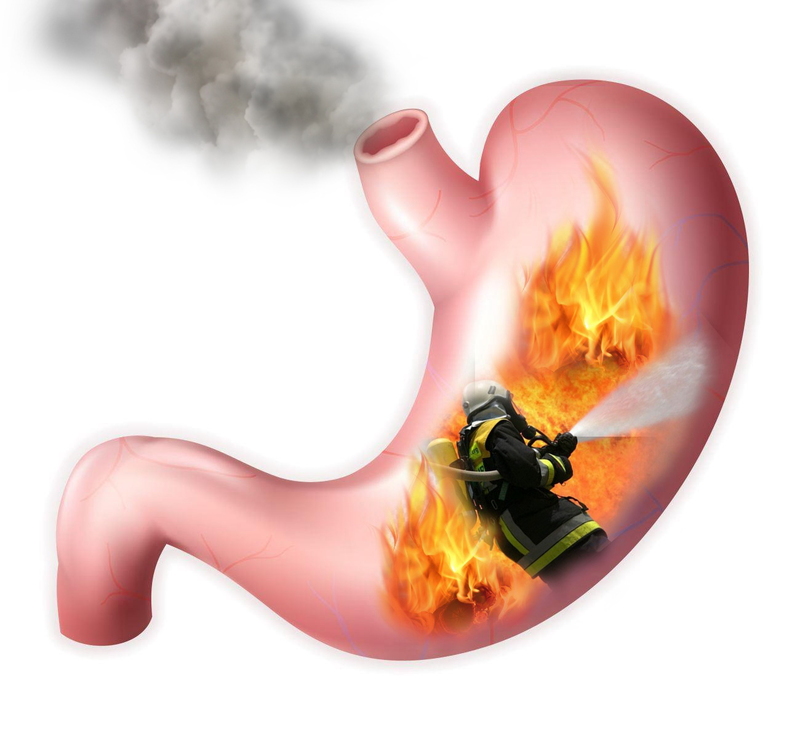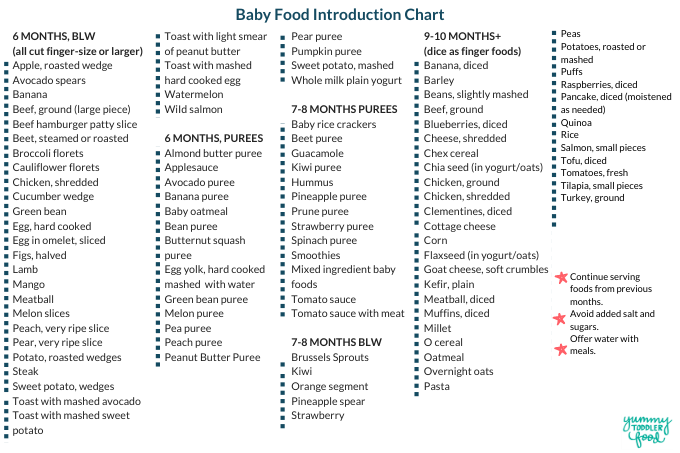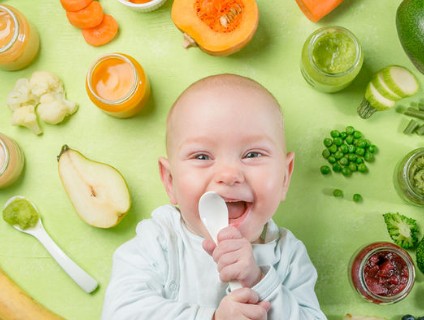How to make beet baby food
3 Ways to Make Beet Puree
// 6 Comments
Do you frequently wear an apron in the kitchen? If not, I encourage you to take out your apron (if you have one) before working on any beet recipes. I didn’t wear my apron when I handled all of our garden grown beets. Now my pure white T-shirt is decorated with random pink polka dots. No big deal. I’ll just use it for a future tie-dye T-shirts project! ?
It was only a few years ago that I bought beets for the first time. I heard people saying they are healthy and tasty. However, I had no idea what I should do with them. So I sliced and sauteed some in oil. Umm…, too sweet and not very tasty.
Things can change, so do tastebuds! Being a food blogger and recipe developer, I have learned so much about beets. I found beets taste best with the addition of some tart flavors, such as lemon or lime juice. The tartness from citrus can tone down some of the sweetness from the beets. I have a few beet recipes on this blog if you’d like to check them out.
Citrus Beet Coconut Overnight Oats
Oven Baked Beet Chips
Spiralized Zucchini and Beet Salad with Garlic
No-Bake Vegan Yogurt Cheesecake with Beets
Garden Tuscan Kale Beet Green Salad
This spring, we planted some in our garden for the first time. Now, it’s time to dig them out. Harvest season!
I have found 3 ways to make beet puree at home. Really simple. It’s also a fantastic way to preserve your extra beets in the freezer for future recipes. Are you ready to enjoy a flavorful and vibrant colored puree?
- Oven Method
Cut the washed beet roots in quarters. Briefly rub with some oil and then wrap them with aluminum foil. Bake in preheated oven at 375 ℉ for about 1 hour. By the way, you can serve the roasted beets with some salt, lemon juice, and herbs. It’s a delicious side dish.
2. Pressure cooker Method
A Pressure cooker is my time and energy saver.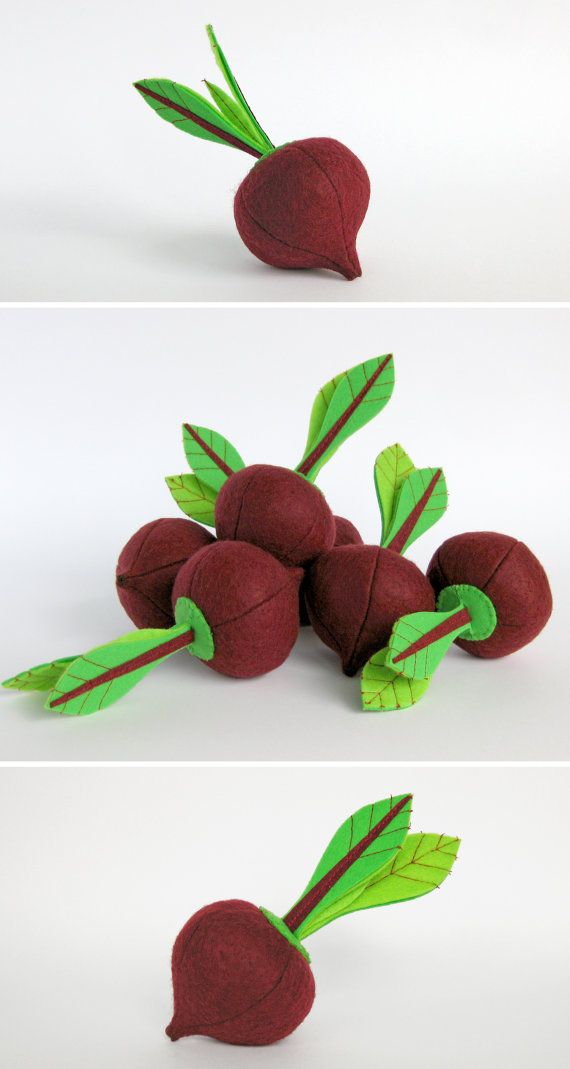 You’ll want to trim off the beet stem as much as you can. I like to keep a little bit on the roots so that the dark red flesh of the root is not exposed to water/steam while cooking. This way less of the natural red dye gets into the water. However, if you’re going to save the water (see below), you can cut the roots in half or quarters. They will cook faster this way. The total cook time for 2-inch diameter size beets is about 15 minutes.
You’ll want to trim off the beet stem as much as you can. I like to keep a little bit on the roots so that the dark red flesh of the root is not exposed to water/steam while cooking. This way less of the natural red dye gets into the water. However, if you’re going to save the water (see below), you can cut the roots in half or quarters. They will cook faster this way. The total cook time for 2-inch diameter size beets is about 15 minutes.
3. Boiling/Steaming Method
This is the most common way to prepare beet puree in a saucepan if you don’t have a pressure cooker. I add enough water so that the beets are only partially immersed in water. The boiling water and steam work together to get the beets soft. It takes about 25 minutes to cook the roots if you cut them in half or quarters.
Once the cooked beets cool slightly, blend them in a food processor to make the puree. If desired, you can remove the skin of the beets before putting them in the food processor.
Now, what do you do with the deep red, nutrient rich beet water if you used either of the the last two methods? I boil down the liquid to make it really concentrated. It’s an amazing natural red dye for your food (stay in tune for my upcoming Chinese mooncake recipe).
5 from 2 votes
10 mins
1 hr 10 mins
Looking for the best way to preserve some extra beets during harvest season? Here are 3 ways to make beet puree that you can freeze for later use. Real simple.
Course: Sauce
Cuisine: Vegan/GlutenFree/No Sugar Added
Keyword: beet, beet puree, garden beets, preserve beet
Author: Joyce @Light Orange Bean
- 4 lbs beet roots
- 1½ cups water
- 2 teaspoons canola oil
Oven Method: Cut the washed beet roots in quarters. Briefly rub them with some oil and wrap with aluminum foil. Bake in preheated oven at 375 ℉ for about 1 hour until the roots are easily pierced with a fork.
 Be careful when you open the foil as the hot steam may cause skin burns.
Be careful when you open the foil as the hot steam may cause skin burns.Pressure cooker Method: Trim off the beet stem as much as you can (see picture in post). Cut the beet roots in half, if they are larger than 2-in diameter . Place all the roots in a pressure cooker. The pressure cooker shouldn’t be filled more than safety line (read your pressure cooker instruction carefully). Add 1 cup of water and cover the pressure cooker with lid. Cook under low steady steam for 15 minutes after the pressure is built up. Remove the pressure cooker from the heat and let the pressure release.
Boiling/Steaming Method: Trim off the beet stem as much as you can (see picture in post). Cut the beet roots into quarters and transfer them into a large saucepan. Add 1½ cups of water into the pan and bring the water to a boil. Reduce heat to medium low and simmer for 25 minutes until the beet roots are easily pierced with a fork.
Place the cooked beet roots into a food processor or blender and blend until smooth.
 The puree can be stored in freezer up to 3 months.
The puree can be stored in freezer up to 3 months.
This entry was posted in Gluten Free, Sauce/Condiment and tagged beet, preserve, sauce.
How to Cook Beets (Beetroot) for Babies
Jump to Recipe
Serve beetroots to your baby with ease and confidence following these cooking tips, serving suggestions, and healthy recipes!
Jump to:- When can babies eat beets?
- Health Benefits
- Are beets safe for babies?
- Selecting the Best Beetroots
- Cooking Methods
- How to Cut Beets for Baby Led Weaning
- How to store
- Frequently Asked Questions
- Beet recipes for babies
- How to Cook Beetroot (3 Easy Methods)
When can babies eat beets?
This nutritious vegetable can be offered to babies as soon as they’re ready to start solids, usually around 6 months. It’s important to remember that your baby is unique and that rather than going by the calendar, you need to make sure your baby is DEVELOPMENTALLY ready to start solids.
If you’re unsure, be sure to grab my FREE handout!
Health Benefits
Beets are nutritional powerhouses. They’re great sources of fiber, potassium, folate, iron, calcium, and vitamin C.
And did you know that the red pigment is also a powerful antioxidant called betalains?
They’re essential for many cell functions and protect our cells against oxidative stress, which can damage cells.
Besides the health benefits, beets provide your baby with such a wonderful flavor and texture experience. The vibrant color is sure to engage their eyes and even pique the interest of your fussy eating toddler.
Be prepared though as they have an uncanny ability to stain everything! Put on a full sleeve bib or serve on bath day ;).
Are beets safe for babies?
As long as it's offered in an appropriate size and texture, it is safe. Let me show you how!
It is also not a common allergen. And If you were told to avoid due to nitrates, be sure to read the FAQ section!
Selecting the Best Beetroots
Choose ones that are rich in color, firm with smooth skin, and round.
And make sure they are small or medium in size (no larger than 3 inches in diameter), as they are sweeter and more tender.
I learned the hard way when the husband brought home large beets thinking bigger is better and they not only tasted terrible but were super tough and fibrous! Never again!
If you're buying beets with leaves and stems attached, the leaves should be crisp and dark green.
Grab ones that are similar in size so they will cook evenly.
They come in many different shades. Golden and white ones are sweet and have a less earthy flavor compared to the red ones. Some even have red and white rings inside! If you can get your hands on these, grab some. It will be a great way to incorporate variety.
Cooking Methods
Be sure to gently scrub under running water to remove any dirt or sand.
It is best to cook with the skin on and some stem and root attached. Otherwise, the beets will stain your hands and everything else that they touch.
The skin will rub off easily after cooking. Once cooled, use a paper towel or gloves to help peel.
It is VERY important that the vegetable is cooked until soft enough to be easily smushed between thumb and forefinger.
Steamed
Insert a steamer basket into a large pot. Fill with water to just below the steamer basket. Bring water to a boil.
Add beets to the pot and cover with a lid. Reduce heat to low and simmer until tender, about 30-40 minutes, depending on the size. Remove from pot. Allow them to cool. Peel skin.
Steam
RoastedThis is my personal favorite as it truly brings out their natural sweetness.
Here’s how to achieve perfectly silky and tender beets that your baby will gobble up in seconds.
- Place the beets in a single layer in a greased baking/casserole dish and cover with a lid. Alternatively, you can coat the beet skins with oil and wrap loosely in foil (wrap big ones individually).
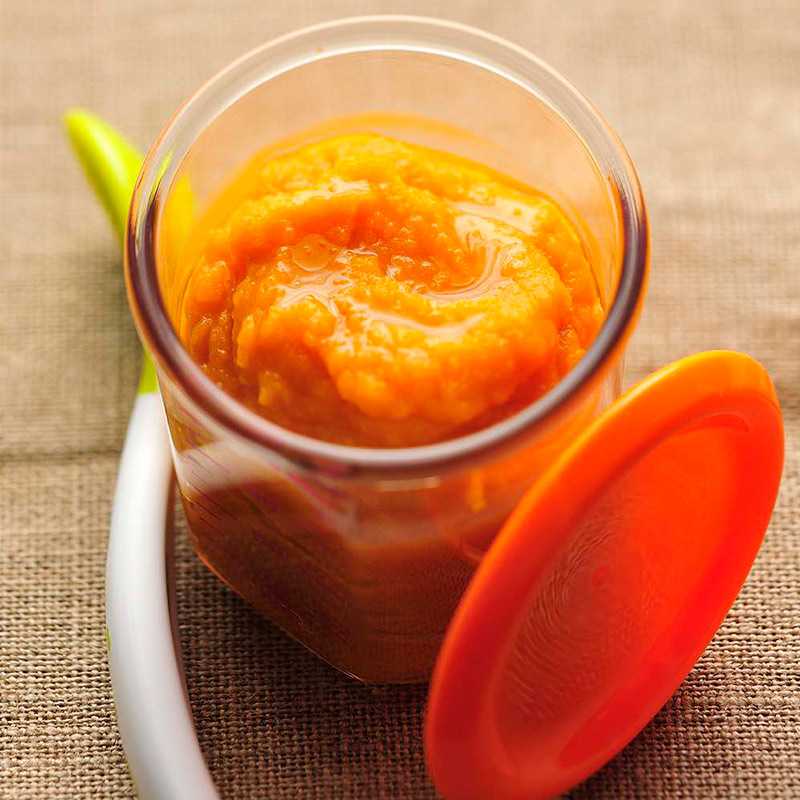
- Roast in the oven at 400°F for 45-50 minutes. You can check the doneness by piercing it with a knife. It should cut through like butter.
- Once cooled, peel, slice and enjoy!
The downside to roasting is that while it's simple to do, it does take a long time for the beets to get softened. Now that I'm a proud owner of the Instant Pot, when I'm pressed for time, here's what I do!
- Place the cleaned beets on trivet or steam basket. Add 1 cup of water.
- Close the lid, making sure valve is at sealing.
- Press manual or pressure cook at high pressure for 15-20 minutes, depending on the size of the beets.
- Do a quick release method by turning the valve from sealing to venting .
- Poke the beets with a knife. If it's still too hard, cook under high pressure for an additional 2-5 minutes.
- Let it cool before peeling the skin with your hands.
They tend to be more expensive but can't beat the convenience!
How to Cut Beets for Baby Led Weaning
Beets provide your baby with such a wonderful flavor and texture experience. Its vibrant color is sure to engage their eyes, and even pique the interest of your fussy eating toddler.
Its vibrant color is sure to engage their eyes, and even pique the interest of your fussy eating toddler.
6+ months old
Pureed - Add cooked beets into a blender and blend until smooth. Add breastmilk/formula, water, or even broth to thin out to desired consistency.
Finely chopped- I like to use my mini chopper for this. Make enough to enjoy throughout the week in various ways. You can add to:
- Homemade baby oatmeal
- Quinoa
- Lentils
- Chia Pudding
- Overnight oats
- Toast
- Yogurt
- French toast
6-9 MONTHS OLD
Either go big or really small. You can finely chop (I love to use this mini chopper), grate or serve quartered.
The beets should be easy to smush between your thumb and forefinger.
9+ MONTHS OLD
As your baby develops their pincer grasp and is able to pick up small pieces of food using their thumb and forefinger, you can cut into small, bite-sized pieces.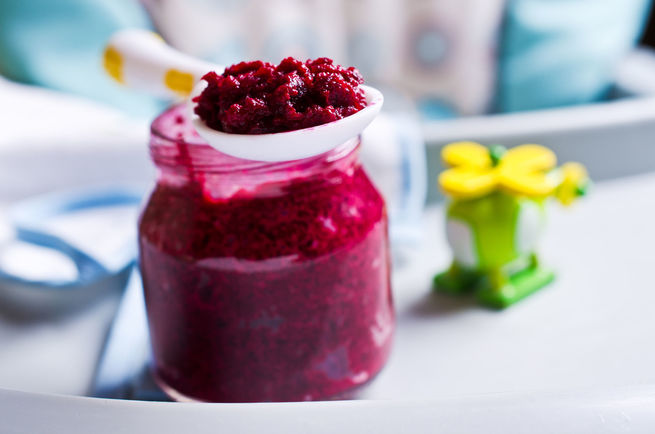 You can also serve thinly sliced.
You can also serve thinly sliced.
If you haven't already, this is a good time to introduce utensils. Your baby will most likely just play around or toss it. But it’s still great for exposure!
Try forking a piece of squash and plate on their plate. Be sure to continue modeling. They are like sponges and learn by watching you!
12+ months old
In addition to all of the above, continue practicing with those utensils. And don’t get discouraged if your child doesn’t seem to be getting it. It's a skill that takes time to master, and the best things you can do are provide plenty of opportunities to practice and model.
Going back up in size and offering whole or halved soft beets is also great for practicing taking bites.
How to store
For uncooked
Do not wash before storing. If you purchased ones with the greens attached, remove it from the root, leaving only about an inch of the stem intact. Otherwise, it will suck the moisture from the root.
Store in the crisper drawer for 2-3 weeks. Beet greens will keep for 3-5 days.
For cooked
Store in an airtight container for 3-5 days in the fridge.
To Freeze
I encourage you to cook a large batch so you can freeze some. I personally like to freeze beets whole but you can also slice them. Transfer to an airtight container and freeze for up to 3 months.
Frequently Asked Questions
Do beets cause constipation?
They actually help promote regularity, thanks to their high fiber content. With my firstborn, beets (and chia seeds) were what really helped get things moving when nothing else seemed to work.
Should I be concerned about the nitrates in beets?
Nitrates are natural chemicals that are found in the soil, air, and water. Therefore, they’re found in many vegetables. When consumed in excess, they can negatively affect blood counts, resulting in lethargy and breathing difficulties.
But this is rare for babies 6 months old and up. The American Academy of Pediatrics recommends that foods with naturally occurring nitrates be avoided before 3 months of age.
This should be easy since babies don't need solid foods until around 6 months of age.
Vegetables provide so many beneficial nutrients that the benefits typically outweigh any harmful effects. But this is also another reminder to incorporate more variety into your child's diet. Too much of one food, whether good or bad, is not ideal.
If you are very concerned, purchasing organic will help minimize the intake of nitrates.
Canned beets ok for baby?
Sure! Just choose ones that contain the least amount of sodium and no added sugar. Give it a good rinse before serving to further reduce the sodium.
Will my baby's urine and poop change in color?
Yes, thanks to the betanin pigment, it is normal for them to take on a reddish hue. Although this can be scary, don't be alarmed. Rest assured, it is completely harmless.
Although this can be scary, don't be alarmed. Rest assured, it is completely harmless.
Beet recipes for babies
As you can see, it takes a long time to cook beets. So be sure to cook a huge batch while you’re at it! You can serve as is or try these recipes!
- Beet Pancakes (egg-free)
- Beet Hummus
- Beetroot Dip with Chickpeas
- Beetroot Blender Muffins
- Turkey Beet Meatballs
- Beetroot Pesto Pasta Sauce
- Beetroot Curry Oatmeal
- Beet Zucchini Bread
- Bibimbap Sauce
How to Cook Beetroot (3 Easy Methods)
Serve beetroots to your baby with ease and confidence following these cooking tips, serving suggestions, and healthy recipes!
5 from 1 vote
Print PinPrep Time: 5 minutes
Cook Time: 45 minutes
Total Time: 50 minutes
Servings: 8
Author: Min | MJ and Hungryman
- ▢
Instant Pot
- ▢
Steamer
- ▢
Baking Mat
- ▢ 1 pound small to medium sized beetroots
- ▢ Olive or avocado oil, if steam roasting
Steamed Beets
Insert a steamer basket into a large pot.
 Fill with water to just below the steamer basket. Bring water to a boil.
Fill with water to just below the steamer basket. Bring water to a boil.Add beets to the pot and cover with a lid. Reduce heat to low and simmer until tender, about 30-40 minutes, depending on the size. Remove from pot. Allow them to cool. Peel skin.
Steam Roasted Beets
Place the beets in a single layer in a greased baking/casserole dish and cover with a lid. Alternatively, you can coat the beet skins with oil and wrap loosely in foil (wrap big ones individually).
Roast in the oven at 400°F for 45-50 minutes. You can check the doneness by piercing it with a knife. It should cut through like butter. Once cooled, peel, slice and enjoy!
Instant Pot Beets
Place the cleaned beets on trivet or steam basket. Add 1 cup of water. Close the lid, making sure valve is at sealing.
Press manual or pressure cook at high pressure for 15-20 minutes, depending on the size of the beets. Do a quick release method by turning the valve from sealing to venting.

Poke the beets with a knife. If it's still too hard, cook under high pressure for an additional 2-5 minutes. Let it cool before peeling the skin with your hands.
Store in an airtight container for 3-5 days in the fridge.
I encourage you to cook a large batch so you can freeze some. I personally like to freeze beets whole but you can also slice them. Transfer to an airtight container and freeze for up to 3 months.
Calories: 24kcal | Carbohydrates: 5g | Protein: 1g | Fat: 1g
Course Side
Cuisine American
Tried this Recipe? Tag me Today!Tag me @KidFriendly.Meals today!
Beetroot complementary foods - Encyclopedia Baby food
Levchuk Victoria© Levchuk Victoria © Russian borscht without beets is not borscht!!! I can’t imagine how you can cook vinaigrette, herring under a fur coat, beetroot without a red vegetable.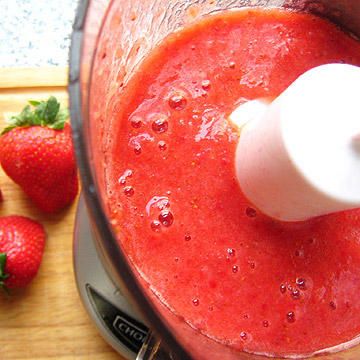 Beetroot is a bright red, sweet vegetable that is rich in nutrients. It is rich in fiber, vitamin C and calcium, which are vital for the development of the child and the prevention of anemia in children and toddlers.
Beetroot is a bright red, sweet vegetable that is rich in nutrients. It is rich in fiber, vitamin C and calcium, which are vital for the development of the child and the prevention of anemia in children and toddlers.
Contents:
Beetroot is a root vegetable also known as red beetroot, table beetroot, garden beetroot, or simply beetroot. Filled with the goodness of nature, this little vegetable is the perfect blend of antioxidants, vitamins, and minerals. Beetroot is a root vegetable and belongs to beta vulgaris. Generally, vegetables of this species are mainly grown as edible root vegetables, which are rich in nutrition and low in carbohydrates. There are basically four types of beets: red, table, green, and golden.
History of the beetroot
Beetroot is a root vegetable, fleshy, round or elongated. Its sweet, spiced flesh is bright red in color. This vegetable was grown by the Egyptians, Greeks and Romans, but, at that time, only the leaves were eaten, and the root was used in medicine.
The history of the use of beet roots dates back to the 19th century, where it was used to give red wine a deep burgundy hue. The Romans were the first to grow beets, and they have been used for a variety of medicinal and culinary purposes ever since. It was traditionally used to extract sucrose for commercial purposes, as it was the only vegetable with a high sugar content.
Benefits of beetroot in baby food
Beetroot in baby food is a very nutritious product for children. It plays a role in the healthy development of the child. Beets are also a unique source of phytonutrients called betanin, which provide antioxidant, anti-inflammatory, and detoxifying support for the body. This root vegetable is used to fight cancer, improve eye health, and protect against heart disease, making it one of the most nutritious vegetables on earth. Beets are pleasing to the eye, a fun canape for a child, and if you add green and white products, you will have a vinaigrette!
Beetroot in baby food is a rich source of fibre, folic acid, vitamin B9, manganese, iron and potassium, etc. The health benefits of this vegetable are numerous and most of us have no idea what we can get by including beets in our daily diet. Cubes, strips, in a salad or borscht, the best feature of this vegetable is that it enhances the health of each dish. This magical root vegetable can prevent various diseases and boost immunity, which is the foundation of a healthy body and mind.
The health benefits of this vegetable are numerous and most of us have no idea what we can get by including beets in our daily diet. Cubes, strips, in a salad or borscht, the best feature of this vegetable is that it enhances the health of each dish. This magical root vegetable can prevent various diseases and boost immunity, which is the foundation of a healthy body and mind.
minerals and vitamins beets
Beets help lower blood pressure
All over the world, high blood pressure has become a silent killer that leads to fatal diseases. Including beets in your diet can help maintain balanced blood pressure levels. Beets are a rich source of healthy nitrate, which naturally converts to nitric oxide in the human body, which can dilate blood vessels and lower blood pressure levels. It is very effective for patients with hypertension.
Beetroot juice helps in detoxification
Beetroot is known for its detoxifying properties that help remove all toxins from the body.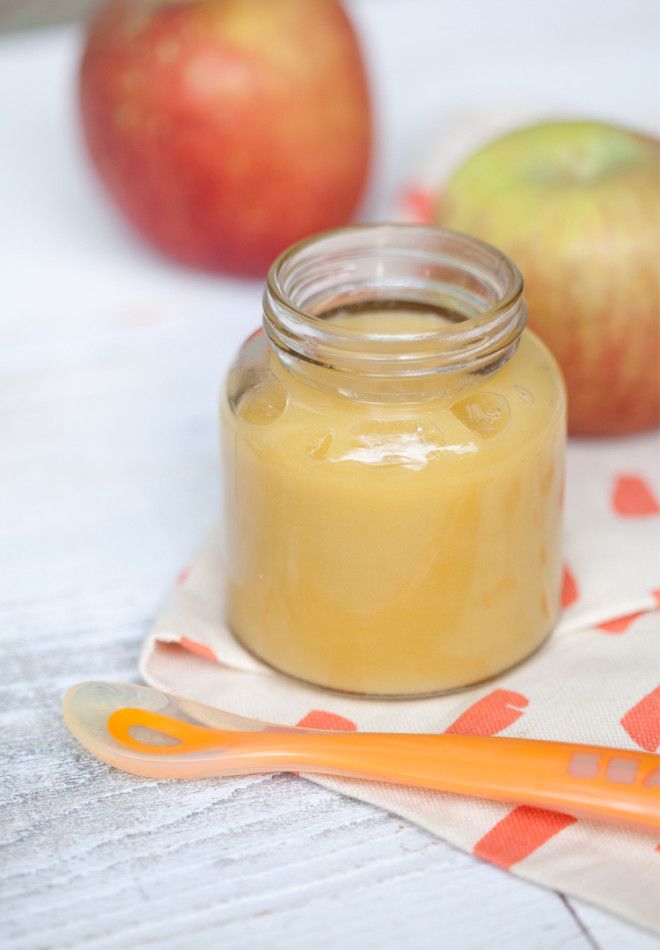 Studies have proven that beetroot juice is effective in increasing the number of red blood cells, which improves stamina. So, let's try beetroot juice and cleanse the body of toxins.
Studies have proven that beetroot juice is effective in increasing the number of red blood cells, which improves stamina. So, let's try beetroot juice and cleanse the body of toxins.
Low fat and calories
Although beets are high in sucrose, their high fiber content makes them a good source of fat-free, calorie-free nutrition. Plus, plant-based calories are a healthier alternative! It is ideal for those who watch their body and can help in weight loss.
Good for diabetics
There is a common myth that beets are bad for diabetics because of their high sugar content. However, it is a myth that beets are enriched with fiber, potassium, manganese and iron, which, when combined with other foods, can provide complete nutrition.
Rich in antioxidants
Beetroot's spectacular color is due to the presence of betanin, which is an antioxidant. The pigmentation of this vegetable, along with other antioxidants known as polyphenols, has gained prominence in the recent past for important nutrients that help lower bad cholesterol levels.
Beetroot contains vitamin C and potassium, which help build the child's immune system. The iron content in beets prevents anemia in children and infants. This root vegetable is rich in fiber, which is good for digestion and treats constipation in children. The content of carotenoids in beets contributes to the nutrition and growth of hair. It helps to improve blood circulation in the brain and body, which contributes to the healthy functioning of the brain in children.
Important - Betanin
The substance betanin in beets can turn a child's urine or stool red. The pigments in red beets are so strong that a baby's stools may turn pink to reddish in color 1-3 days after consumption, but there is no need to be alarmed as this is completely normal.
It is best to introduce beets into baby food after 12 months. This is my personal opinion, in no way connected with pediatricians and scientists.
Some Russian pediatricians advise to introduce the child to beets after 8-9 months, if all less allergic vegetables are included in complementary foods.
American pediatricians suggest adding beetroot to complementary foods at the age of 8-10 months.
Beets are introduced into complementary foods like any new product. Beetroot puree is made, which is given first ¼ part of a teaspoon, then ½ part, then more. You need to be careful with beets, as a child may be allergic to it. The first complementary food is only boiled.
Fresh raw beet roots or leaves can be given after 3 years in salads in a small amount no more than 30-50 grams once a week. We give fresh salads only in the root crop season, choose small-sized fruits and fresh leaves. We choose sugar juicy and soft varieties so that the child can chew them. We introduce raw beets into complementary foods for 2-3 days as a new product, we start with the minimum portion, we look at the child's stool. In case of any incomprehensible reaction or changes, we cancel the introduction of the product into complementary foods.
The daily norm of boiled beets in the diet of a child is about 30 grams up to 18 months, 50 grams up to 3 years of age, after up to 7 years you can give about 100 grams.
Pickled beets is given to a child after 6-7 years, I remind you, because of the marinade.
Beet juice can be given with great caution after 12 months.
Beetroot juice from 1 to 3 years old can be given up to 50-70 ml no more, we observe the daily portion of juice according to age. The juice is diluted with water. How is described below.
In Ruth Yaron's Super Nutrition for Your Baby. From 0 to 2 years. says that boiled beets can be given to a child after 9 months, raw after 10-11 months, but take into account the nitrates that may be in it. This book indicates that Russian pediatricians recommend introducing beets into complementary foods after a year because of the high likelihood of an allergic reaction.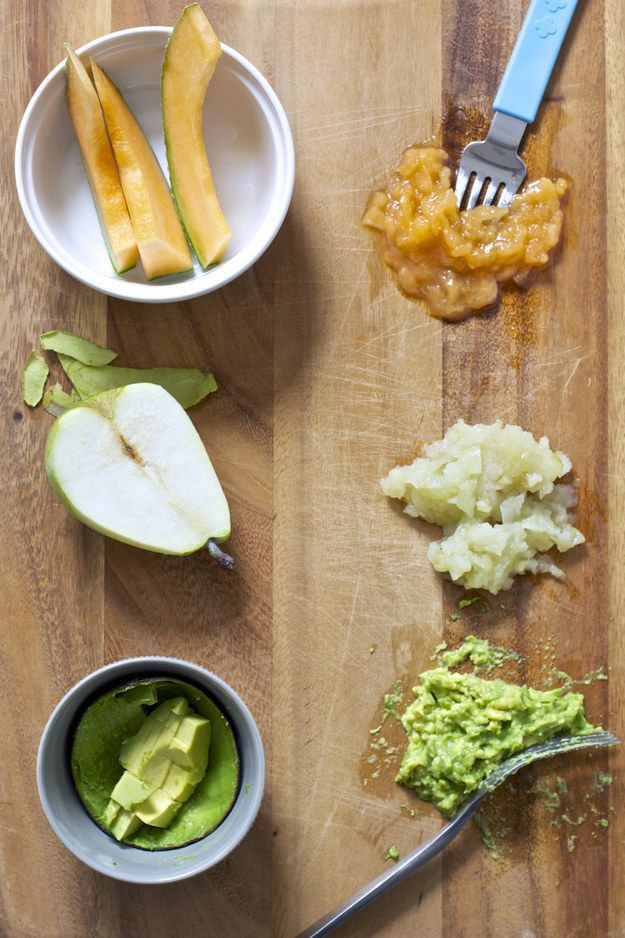
How much boiled beets per week? This is where opinions differ. Some write up to 3 years no more than 1 time per week, others write 1-2 times a week, and after 7 years you can give at least every day.
Parents decide on their own, look at the child's chair. If he is very weak with him, then giving beets more than 1 time per week is not worth it.
complementary food beets
The real introduction of beets into complementary foods
And now I will write how most Russian mothers actually introduce their child to beets. Borsch!!! Yes, many mothers do not suffer from boiling beets, but simply give borscht a try without tomatoes. Half a spoonful for a child is a normal dosage for the first time, especially if the child responds well to other foods. Due to the fact that acquaintance with beets occurs in a multi-component dish, so I think the child should be more than 12 months old. After the borscht is introduced into the child's complementary foods, you can cook a children's vinaigrette, give the child a couple of salad cubes to try.
It usually takes 2-3 days to get acquainted with pure boiled beets, after borscht. The child, in principle, is already familiar with beets, but caution does not hurt. Since the reaction may be to the amount of food. Those. the body coped with the minimum portion, but it can not cope with the maximum and the child pours out. Beets are allergenic, so be careful. Here you also need to take into account that the child may not like the beets at first, so the minimum portions will help you quickly adapt to the product.
The child's stool and urine after eating beets may change, become a little red and liquid (weaker than before, do not confuse with diarrhea), which is why I wrote above.
Beet allergy in a child
Beet allergy is an allergic reaction that occurs after contact with or ingestion of the root vegetable or its products. Allergy to beets is possible in some children. Allergy symptoms include rash, diarrhea, itching, hives, nausea, vomiting, chills, abdominal pain, runny nose, wheezing, swelling of the face, ear infection, watery eyes, red eyes, sore throat, and fever. For most people, symptoms are mild and go away easily, but the reaction can be more severe, leading to anaphylaxis, for example. Children, the elderly and people with diabetes are more prone to these allergic reactions than other people.
For most people, symptoms are mild and go away easily, but the reaction can be more severe, leading to anaphylaxis, for example. Children, the elderly and people with diabetes are more prone to these allergic reactions than other people.
The first cause of allergy is consumption of beets, which include (cooked and raw) beet roots, leaves and sugar from beets.
A case of an allergic reaction caused by inhalation of steam from boiled beets has been reported.
If a person experiences severe cramps when eating beetroot, this may be due to a food intolerance to beetroot. This means that the digestive system cannot break down proteins, carbohydrates and sugars. Beets that are not digested are deposited in the colon, where they mix with intestinal bacteria, causing bloating, abdominal pain, or cramps.
Diarrhea and constipation may also occur. Eating beets can cause increased gas production due to the fiber content in beets.
The body can also react to the high levels of nitrates in beets, which can lead to indigestion, diarrhea and vomiting. These symptoms may appear as early as 2 hours after consumption or 18-36 hours.
How to give beets?
Beets have become famous for their amazing health benefits. However, it is widely believed that cooking reduces the benefits of several vegetables. Here's how you should consume beets to get the most out of them:
* Although the nutrients present in beets are heat sensitive. However, long-term cooking at high heat reduces the amount of nutrients and antioxidants.
* It is a rich source of vitamin C, which is a water-soluble vitamin, but cooking destroys this vitamin present in beets.
* Most of the folate content of beets is lost when cooked at high heat.
* The best way to eat and benefit from this vegetable - eat it fresh and raw. However, children rarely like the taste, so it can be steamed or baked at a low temperature.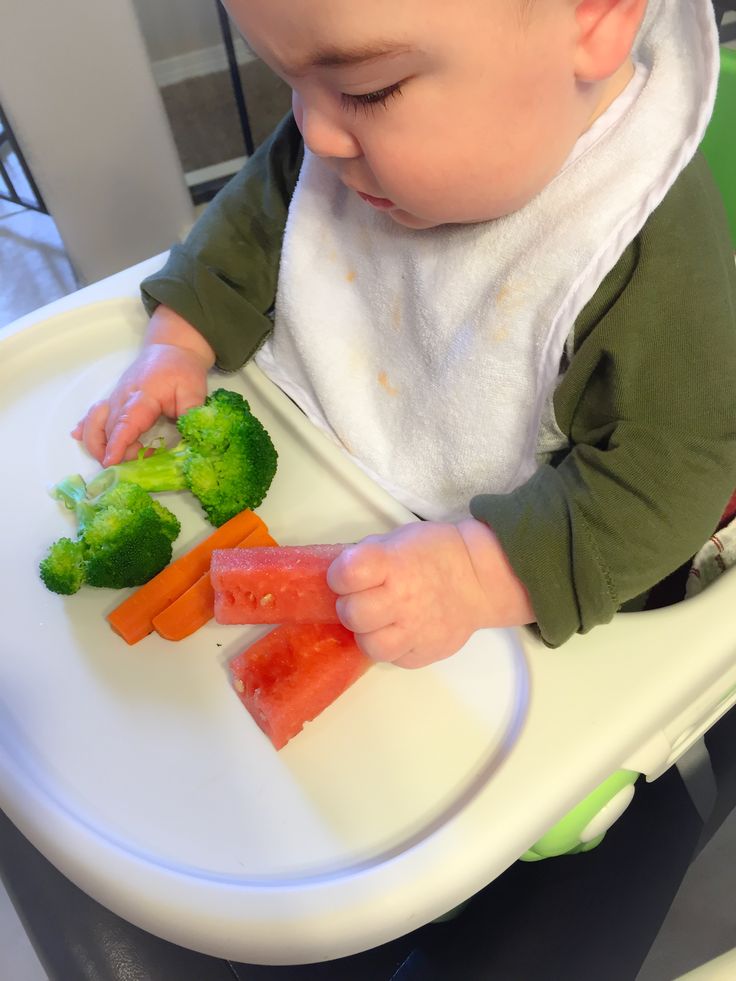
* Grilled or roasted beetroot is another way to preserve the key nutrients of this vegetable. Removes sweetness and gives it a crunchy taste.
* Raw beets can enhance the flavor of sauces, juices and soups. When making soups, do not overheat the puree and add it at a later stage while the soup is cooking, this will not reduce the nutritional value.
How to choose and store beets
When choosing beets for baby food, we try to buy a fresh vegetable whenever possible. A medium-sized root crop is more tender and tasty than large beets. Many recommend completely bypassing beets if they are over 8-10 cm in diameter. Bigger is not better!!!
Select undamaged or intact beets, i.e. no cuts or rot. Beets come in a variety of colors including red, yellow and of course the famous purple. If possible, buy beets that still have green leaves attached, a fresher version. We do not look at the dirt on the vegetable, it is rarely sold beautifully washed and shiny.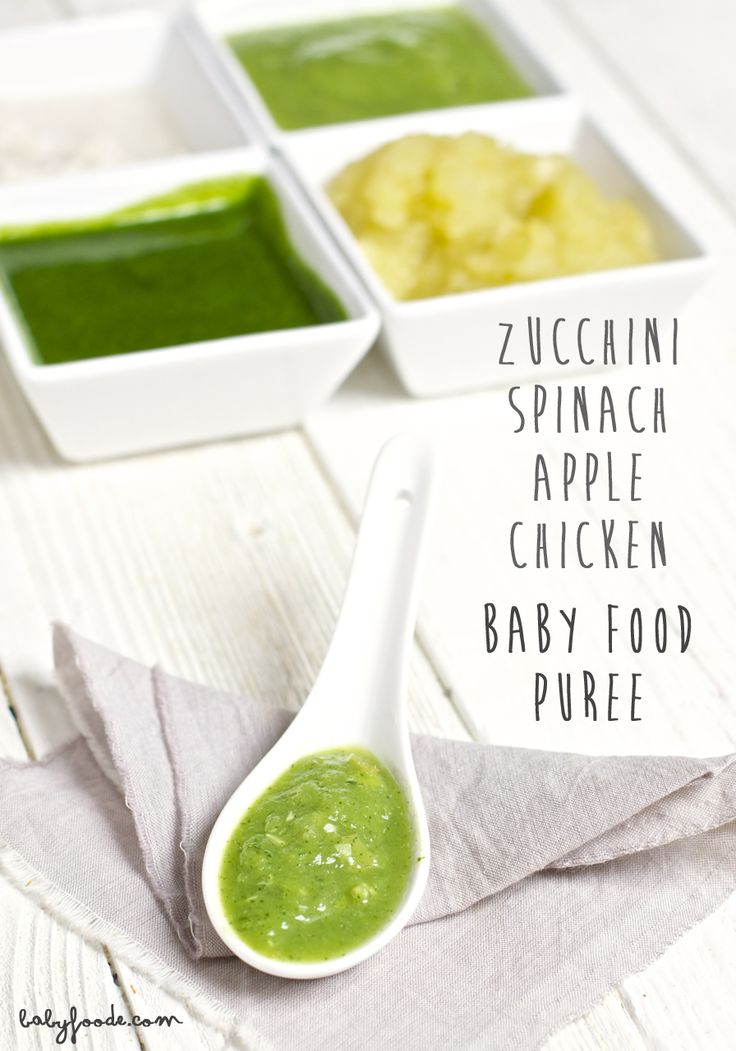
To store beetroot, remove the greens and then place in a bag and place in the vegetable drawer in the refrigerator. Beets will stay fresh for about 1-2 months. You can store in the refrigerator for up to 6 months, but keep in mind that the beneficial and taste properties are lost over time. In the cellar in the sand, the beets are stored longer and retain their taste too.
Nitrates and beets
Vegetables collect nitrates from the soil in which they are grown. Synthetic fertilizers can introduce nitrates into the soil, and some nitrates are formed naturally when bacteria in the soil break down certain components. While organic vegetables may have lower traces of nitrate from synthetic fertilizers, they will still contain naturally occurring nitrate from bacterial breakdown in the soil.
Beet roots and assigned nitrate queen status . Therefore, for baby food we use a boiled product and it is best to cut off the top and tail by about ¼. You can soak the beets for a while, changing the water several times.
You can soak the beets for a while, changing the water several times.
But I read that nitrates in beets do not harm people in any way, and even help with lowering blood pressure. I do not know whether to believe or not these studies. Most importantly, keep an eye on your child. If the cheeks, palms turn red, the stool worsens, vomiting is most likely a reaction to nitrates in beets. We remove beets from the diet, give antihistamines or polysorb, we look at the situation.
Contraindications
For most people, adding more beets to their diet is healthy and safe, and side effects such as lowering blood pressure or antioxidant protection are helpful. Side effects from beetroot are rare, but be aware that some people are allergic to beetroot .
Another strange and potentially frightening side effect of eating beets is called beturia . According to Medical News Today, the dark red pigments in beets can make urine red or pink in about 10 to 14 percent of people.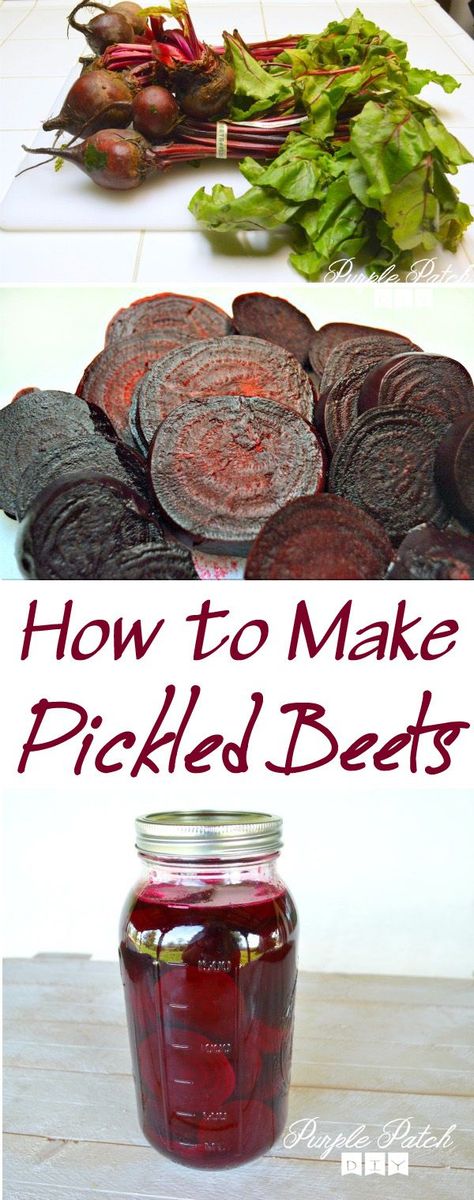 They can also turn dark reddish-black stools a day or two after eating it.
They can also turn dark reddish-black stools a day or two after eating it.
Because beets are high in oxalic acid , they should be avoided if you are on a low oxalate diet. For some people, eating foods high in oxalates can lead to kidney stones.
Proposed way of consumption
Beetroot in complementary foods is best consumed boiled up to 3 years. Dishes at the beginning of the introduction of the product in baby food are chosen familiar to the family. If borscht and vinaigrette are often cooked at home, then we introduce these products. We take into account that it is better to give nuts to a child after 3 years, so we prepare a classic salad of beets and nuts without the last ingredient. It's time to learn right stew beets , a very tasty and healthy dish.
As a reminder, beets turn other foods red. Therefore, we use this fact in order to visually diversify the color of baby food. You can make red mashed potatoes, purple rice casserole, or red borscht.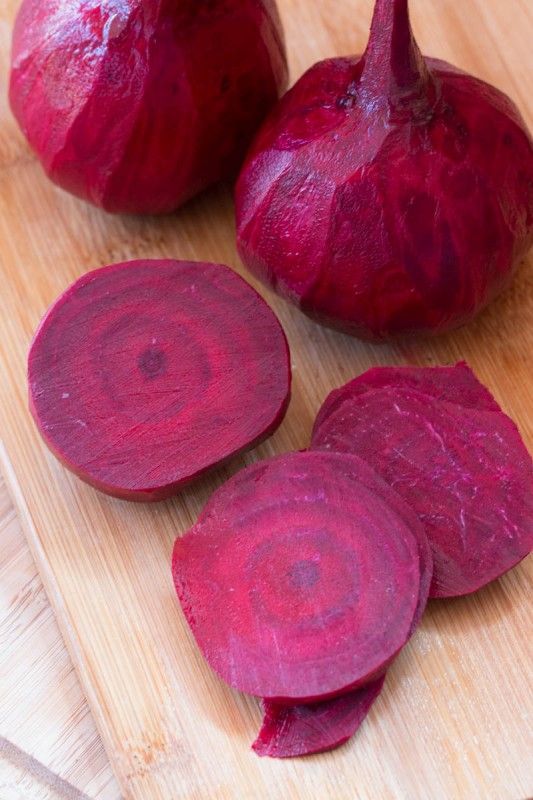 We show imagination, a picky eater can appreciate red dishes.
We show imagination, a picky eater can appreciate red dishes.
Beets are ideal for steaming or roasting in the oven with spices. Steaming is indeed the best method for cooking root vegetables, especially if you need to use it for baby food. Steaming will make the beets softer and easier to puree. And vitamin A beta-carotene will be more bioavailable and easily used by the body.
It is better to cook beets in their skin, vitamins and minerals are preserved more, after boiling the skin is removed, it is not eaten.
Freezing beets
Can beets be frozen? Can. In the form of cubes and pieces. Store in the freezer for up to 3 months. But I don't see the point in doing it. Since beetroot belongs to the basic food products, i.e. a root crop that can be stored in the refrigerator for a relatively long time, that is, is there any point in freezing.
You can freeze beetroot for green cabbage soup. Freeze like regular greens. Washed, cut, dried, put in a bag and quickly frozen.
I freeze only the roast for borscht, where there is beetroot, to save time when cooking. Therefore, parents decide on their own to freeze or not to freeze beets.
The leftover beetroot puree is best frozen. Then you can put in mashed potatoes or casserole. A quick way to make a dish bright and colorful.
Beet juice
Everyone knows that beet juice is used as an additive to medicines because it is rich in vitamin A, potassium, phosphorus and chlorine. Its regular use increases the level of hemoglobin in the blood, improves immunity and normalizes the functioning of the heart. Beets can replace a whole set of medicines for our children!
Some children refuse to drink raw beetroot juice. In this case, boiled/roasted beet juice can be offered. Although heat treatment partially destroys vitamins and minerals, it also reduces the amount of harmful substances such as nitrates. Do not peel before boiling.
Freshly squeezed beetroot juice should be left for a couple of hours before drinking. Harmful substances will partially evaporate upon contact with air, plus the taste improves when the juice is settled. Beetroot tastes a bit bitter for a child's throat, and it can cause a cough. Therefore, I would advise mixing beetroot juice with apples or carrots.
Harmful substances will partially evaporate upon contact with air, plus the taste improves when the juice is settled. Beetroot tastes a bit bitter for a child's throat, and it can cause a cough. Therefore, I would advise mixing beetroot juice with apples or carrots.
Making beetroot juice is easy. We take small root crops, wash, clean, cut into pieces. Then either in a juicer or in a blender.
After the juicer, dilute and drink. Strain through cheesecloth after blender.
Any juice given to a child after 12 months must be diluted 1:1 with boiled water. Beet juice also needs to be diluted. The daily norm of juice after 12 months is about 50-70 ml, which was diluted with water. This will be safer for the stomach. We introduce the child to beetroot juice after getting acquainted with the product, since the reaction to fresh juice may be stronger than to boiled beets. Give no more than 1 time per week.
How to cook beetroot
Beetroot can be baked, boiled or steamed and then peeled and mashed.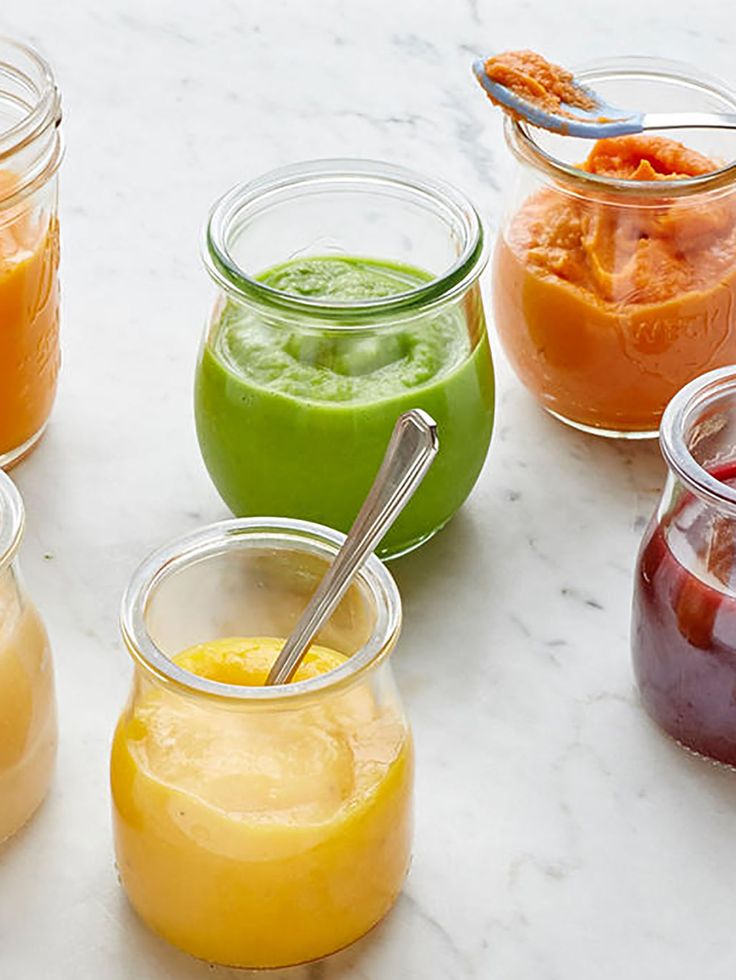 Please note that it takes time to cook beets:
Please note that it takes time to cook beets:
Steamed: is great for preserving nutrients, but it takes time, it takes about 60 minutes, depending on the size of the root.
Boil: Boil beets for two hours (regard size). The peel is easily removed, and vitamins are better preserved in whole beets.
Bake: thoroughly wash, peel, cut into pieces, put on a baking sheet and bake at 200 ° C for 30-40 minutes - the more beets, the longer the baking time.
Preparing the puree: After cooking the beets, remove the peel under cold running water. We beat with a blender. Beetroot puree will keep in the refrigerator for 2 days.
Finger food and beetroot
Beetroot is ideal for finger food. It is usually introduced into complementary foods after 12 months, when the child already eats pieces of food well. We just cut the boiled beets into cubes and offer the child. You can cook a children's vinaigrette, then the baby will have a large selection of products that he wants to try.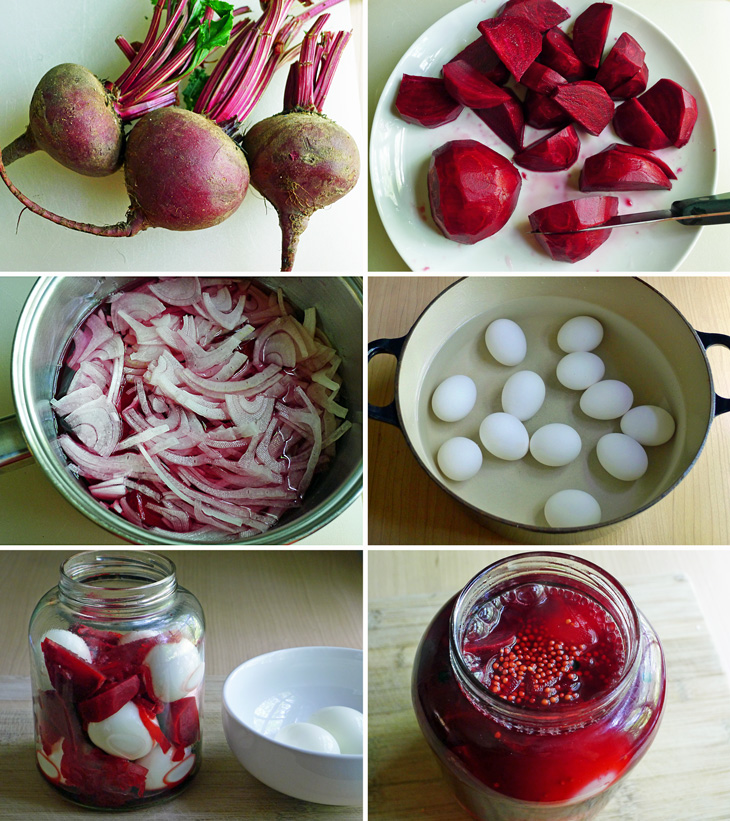
Please note that beetroot cubes should be small so that the child does not choke. The younger the baby, the smaller the size of the cube. I remind you that the child’s trachea is small and round, the product can get stuck easily and simply, therefore, when offering finger foods, we sit next to the child or so that he does not run with food in his hands. Choking on the run is easy. We observe safety when eating in pieces.
Beetroot baby food
There is very little baby food with beetroot, but it is found. Surprisingly, there was tea with beets, of course, a small amount of the root crop in the total composition. Perhaps there are some other baby products with beets on sale, write, I will add. However, I am glad that in industrial production, beets are found in complementary foods.
Encyclopedia Baby Food!
Don't forget to bookmark us! (CTRL+SHIFT+D) Subscribe to the site, comment, share in social networks.
On our website Encyclopedia Baby Food there is useful information on the nutrition of your children, which is useful for everyone, and we update the website "Encyclopedia Baby Food" constantly and try to search and write only excellent, verified and necessary information for you and your children.

Disclaimer #1: It must be understood that the author of the articles on the website "Encyclopedia Baby Food" is not a medical staff, "I am not a doctor." The information I share is based on my own experience. My goal is not to teach you how to eat or feed your child, but to talk about how we did it, what new things I learned or read. This expands the picture of Baby Food knowledge, gives you a glimpse of the whole process so you can decide if you like it or not.
Disclaimer No. 2 : However, the above does not cancel a visit to the pediatrician. Before you start complementary foods, you need to get his professional opinion on the best way to introduce new foods for your baby. I also draw your attention to the fact that you need to look at the original date of the published articles, because some of the "best practices" may have changed. Always check with your child's pediatrician about complementary foods and their health.
Disclaimer No.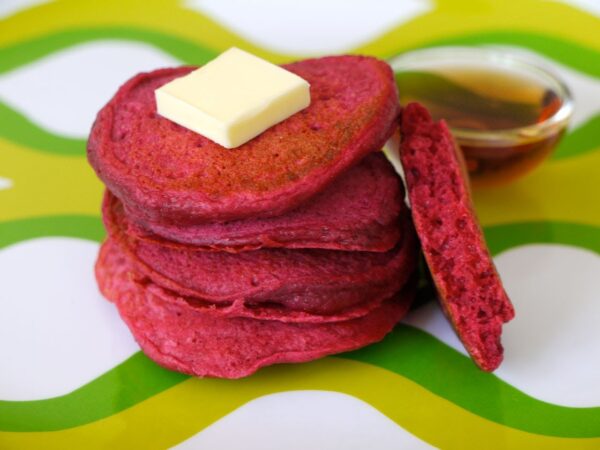 3: Keep in mind that every family is unique, every situation is also completely unique. There are no universal solutions. Only you can find what works best for you. Certain goals require certain sacrifices and priorities - not everyone wants to make those choices, and that's GREAT! Just know what you want to achieve, and be ready to get to work, putting the best of your strength!
3: Keep in mind that every family is unique, every situation is also completely unique. There are no universal solutions. Only you can find what works best for you. Certain goals require certain sacrifices and priorities - not everyone wants to make those choices, and that's GREAT! Just know what you want to achieve, and be ready to get to work, putting the best of your strength!
Disclaimer No. 4: On the Encyclopedia Baby Food website, photos from books on baby food with attribution are used to better understand the information (Article 1274, Clause 1, Part Four of the Civil Code of the Russian Federation). Literature on baby food is found in the public domain on the Internet.
Apricot puree with chicken
Banan-global puree
Banana puree
borsch
Bousse broth with peas and rice
Botterbrod with kolrabi
REMODED DEMENTION FROM THE DEMENTS
Spring LOADS
GROUSE OF GREED TOGINE COURE Buckwheat porridge with apricots
Buckwheat porridge with banana
Buckwheat pilaf
Children's sausage
Children's milk porridge with banana
Children's vinaigrette
Children's ketchup
Children's cucumber salad
Children's salad Olivier
Children's porridge biscuits
Children's puree of strawberries, bananas, yellow cherries, yogurt and biscuits with cereals
Children's puree with cottage cheese and fruit
Homemade yeast bread with flax flour
Homemade cheese
Homemade pizza
4 Breakfast outside Kohlrabi appetizer
Roasted cauliflower
Roasted carrots
Roasted carrots and cherries with millet
Winter salad with Jerusalem artichoke
Cabbage with white beans
Cabbage salad like in a canteen
Mashed potatoes
Quinoa and pumpkin porridge
Quinoa porridge
breakfast cereals
Quinoa and apple
Strawberry puree
Strawberry puree with banana
Strawberry compote
Wild apple and raspberry compote
Thermo-steamed fruit compote for children 8 months
Corn porridge
Corn porridge with pear
Corn porridge with pumpkin
Corn porridge with pumpkin and carrots
Corn porridge with apple and carrots
Chicken liver in the oven
Chicken cutlets with carrots
Chicken with carrots, sweet peppers and potatoes
Navy pasta
Macaroni with orange sauce
Macaroni with Gremolata
Muffins with vegetables and egg
Jacket potatoes
Milk vermicelli soup4 Carrot puree
Carrot-rice casserole
Carrots with chicken
Amanita from eggs and tomatoes
Meat envelopes
Homemade Tarragon drink for children
Vegetable puree from cauliflower and carrots
Vegetable soup with corn semolina
Vegetable soup with cheese and corn semolina
Vegetable soup with spinach
Vegetable soup-puree with bell pepper
Oatmeal
Pollock fritters
Hot yogurt fritters
Omelet cauliflower 90 in a bag
Spinach and Cheese Omelette
Omelette Pancake
Peach Puree
Baked Apples 7 months +
Zucchini and Carrot Pie
Zucchini Pie
Rice and Zucchini Pie
Fish Pie
Fish and potato pie
White cabbage pizza
Lavash pizza
Zucchini, tomato and sausage pizza
Tomato and olive pizza
Spinach pizza
Rabbit pilaf
Chicken pilaf with green peas and corn Puree
Banana, cottage cheese and porridge puree 4 cereals
Broccoli (cauliflower) puree
Broccoli, courgette and cauliflower puree
Blueberry puree
Pear puree
Pear and banana puree
Pear and banana puree, baked
Pear and pumpkin puree 7 months +
Pear, pumpkin and peach puree
Pear, apple, plum and prunes puree
Blackberry puree
Turkey puree
Zucchini puree 90 zucchini and broccoli
Zucchini, carrot and potato puree
Quinoa and banana puree
Quinoa and carrot puree
Quinoa, banana and carrot puree
Quinoa, squash and carrot puree
Quinoa, peach and raspberry puree
quinoa, cauliflower, apple, peas and mint
Quinoa, apple, pear and raisin puree
Quinoa, apple, carrot puree
Rabbit, broccoli and cauliflower puree
Chicken, carrot, potato, apple and pea puree
Raspberry, cherry and banana puree
carrots
Carrot and apple puree
Carrot, potato, broccoli puree with cheese
Carrot, potato, apple and quinoa puree
Carrot, pumpkin, apple and prunes puree
Carrot, apple and potato puree
Turnip and carrots
Plum puree
Cottage cheese, strawberry and banana puree
Pumpkin puree
Pumpkin and banana puree
Pumpkin and squash puree
Pumpkin and apple puree
Pumpkin, apple and banana puree
Cauliflower and broccoli puree
Cauliflower puree and potatoes
Cauliflower and rice puree
Cauliflower and apple puree
Cauliflower, green peas and squash puree
Cauliflower, turkey and potato puree
Cauliflower, potato and squash puree
Cauliflower, carrot and broccoli puree
Cauliflower, carrot, cheese and rice puree
Cauliflower, apple and courgette puree
Zucchini puree
Zucchini and potato puree
Zucchini, carrot and apple puree 90 cherries
Blueberry puree
Prune puree
Apple, pumpkin, carrot and some curry puree
Apple and pear puree
Apple and strawberry puree
Apple, strawberry and cherry puree
Apple, peach and banana puree
Carrot and pumpkin puree
Cottage cheese and banana puree
Turkey, potato and carrot stew
Zucchini, carrot and broccoli stew
Fish, potato, carrot and broccoli stew
Rice porridge
Whole grain rice porridge
carrot
Rice porridge with pumpkin
Rice porridge with apples
Rice porridge with apple and pear
Rice porridge with apple and pumpkin
Fish cakes with vegetables
Semi-cooked fish
Fish meatballs with ketchup
Baby Fish Soup
Salmon and Celery Fish Soup
Carrot and Kohlrabi Salad
Chickpea Salad
Chickpea and Cabbage Salad
Laziest Soup
Creamy Kohlrabi Soup
Oatmeal Smoothie Pot90 Sauce
Cheese Pizza
Pea and Bacon Soup
Baked Vegetable Soup
Kohlrabi Soup
Salmon Soup
Cauliflower Soup
Turnip Potato Soup
Meatball Soup for the Picky Eater
Green apple kohlrabi soup
Rabbit, pumpkin, potato, broccoli and cauliflower soup
Beetroot soup
Pumpkin mushroom soup
Broccoli and celery soup
Soup/stew Pork with Potatoes and Carrots
Cheese Pasties
Pumpkin Cheese Sauce (Annabelle Carmel Recipe)
Buzz Lightyear Sandwich
Pumpkin Apple Puree
Pumpkin Apple Juice
Pumpkin Cake
Pumpkin Soup9 Puree
Fruit Salad 5 Bread lavash
Cauliflower with cheese
Linden tea and thyme
Experimental noodle soup with lentils
Apple puree
Apple juice
Don’t be afraid and add me to VK and Instagram, Odnoklassniki
Like this article? Subscribe to site updates
"Encyclopedia Baby Food"!
Don't forget to bookmark us! (CTRL+SHIFT+D) Subscribe to the site, comment, share in social networks.
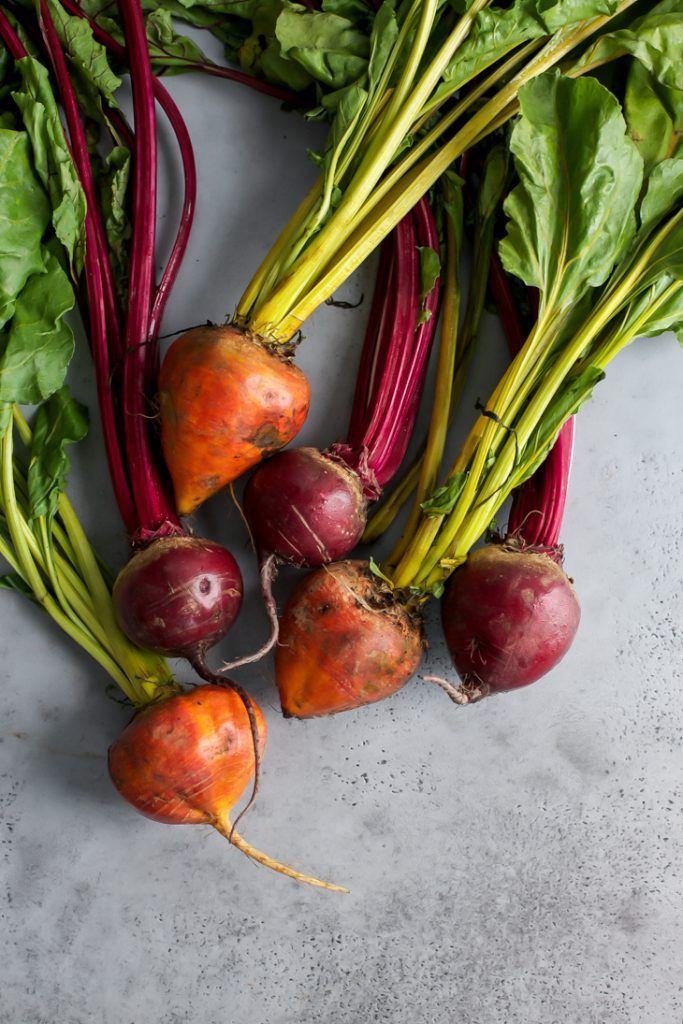
On our website Encyclopedia Baby Food there is useful information on the nutrition of your children, which is useful for everyone, and we update the website "Encyclopedia Baby Food" constantly and try to search and write only excellent, verified and necessary information for you and your children.
Disclaimer No. 1: It must be understood that the author of the articles on the Baby Food Encyclopedia website is not a medical staff, “I am not a doctor.” The information I share is based on my own experience. My goal is not to teach you how to eat or feed your child, but to talk about how we did it, what new things I learned or read. This expands the picture of Baby Food knowledge, gives you a glimpse of the whole process so you can decide if you like it or not.
Disclaimer No. 2 : However, the above does not cancel visiting a pediatrician. Before you start complementary foods, you need to get his professional opinion on the best way to introduce new foods for your baby. I also draw your attention to the fact that you need to look at the original date of the published articles, because some of the "best practices" may have changed. Always check with your child's pediatrician about complementary foods and their health.
I also draw your attention to the fact that you need to look at the original date of the published articles, because some of the "best practices" may have changed. Always check with your child's pediatrician about complementary foods and their health.
Disclaimer #3: Keep in mind that every family is unique, every situation is also completely unique. There are no universal solutions. Only you can find what works best for you. Certain goals require certain sacrifices and priorities - not everyone wants to make that choice, and that's GREAT! Just know what you want to achieve, and be ready to get to work, putting the best of your strength!
Disclaimer No. 4: On the Encyclopedia Baby Food website, photos from books on baby food with attribution are used to better understand the information (Article 1274, Clause 1, Part Four of the Civil Code of the Russian Federation). Literature on baby food is found in the public domain on the Internet.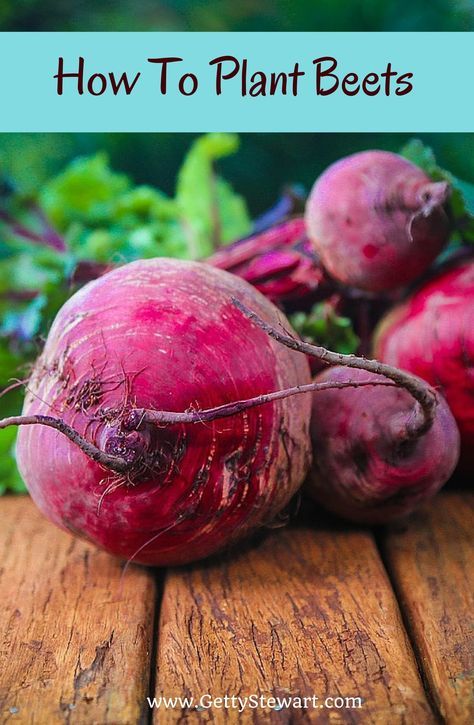
Disclaimer No. 5: Content, editing, proofreading, layout, etc. produced ONLY by the author of the site Encyclopedia Baby food. Therefore, I apologize for spelling, punctuation and stylistic errors. If you notice a mistake, please report it, and do not write angry comments about the illiteracy of the author of the article.
Apricot puree with chicken
Banana-apple puree
Banana puree
Borscht
Broth with peas and rice
Botterbrod with kolrabi
Quick dessert from the finished dough
jam with strawberries
Spring salad
buckwheat with green peas
buckwheat porridge
Apricotes
Banka Buckwheat 9004 Children's Vinaigrette
Children's Ketchup
Children's Cucumber Salad
Children's Olivier Salad
Children's Porridge Cookies
Children's Strawberry, Banana, Yellow Cherry, Matsoni and Cereal Cookies Puree
Children's mashed potatoes with cottage cheese and fruits
Home yeast bread with linen flour
Home cheese
Home pizza
Breakfast on the street
Opel from kolrabi
Cauced cabbage
Baked carrots and stoves with a millet 9004 with white beans
Cabbage salad like in a canteen
Mashed potatoes
Quinoa and pumpkin porridge
Quinoa porridge
Breakfast cereals
Quinoa and apple
Strawberry puree
Strawberry puree with banana
Strawberry compote
Compote of wild apples and raspberries
Compote of dried fruits steamed in a thermos for a baby over 8 months old
Corn porridge
Corn porridge with pear
Corn porridge with pumpkin
Corn and carrot porridge Corn porridge with apple and carrots
Chicken liver in the oven
Chicken cutlets with carrots
Chicken with carrots, sweet peppers and potatoes
Navy pasta
Pasta with orange sauce
Pasta with Gremolata
Muffins with vegetables and egg
New potatoes in their skins
Vermicelli milk soup
Carrot and potato puree
Carrot and rice casserole
Carrot with chicken
Fly agaric from eggs and tomatoes children
Vegetable puree with cauliflower and carrots
Vegetable soup with corn semolina
Vegetable soup with cheese and corn semolina
Vegetable soup with spinach
Vegetable soup-puree with bell pepper
oatmeal
pancakes from polions
pancakes on hot kefir
omelet in a package
omelet with broccoli and cauliflower
oglet with spinach and cheese
omelet pancake
Baked apples 7 months +
pies Pie pies and carpies 9004
Rice and zucchini pie
Fish pie
Fish and potato pie
White cabbage pizza
Lavash pizza
Zucchini, tomato and sausage pizza
Tomato and olive pizza
Spinach pizza
Rabbit pilaf
Chicken pilaf with green peas and corn
Banana and cherry puree
Banana, cottage cheese and porridge puree 4 grains
Broccoli (cauliflower) puree
Broccoli, cauliflower and cauliflower puree
Blueberry puree
Pear puree
Pear and banana puree
Pear and banana puree, baked
Pear and pumpkin puree 7 months +
Pear, pumpkin and peach puree
Pear, apple, plum and prunes puree
Blackberry puree
Turkey puree
Zucchini puree
Zucchini and broccoli puree
Zucchini, carrot and potato puree
Quinoa and banana puree
Quinoa and carrot puree
Quinoa, banana and carrot puree 9405
Quinoa, peach and raspberry puree
Quinoa, cauliflower, apple, pea and mint puree
Quinoa, apple, pear and raisin puree
Quinoa, apple, carrot puree
Rabbit, broccoli and mint puree cauliflower
Chicken, carrot, potato, apple and pea puree
Raspberry, cherry and banana puree
Carrot puree
Carrot and apple puree
Carrot, potato, broccoli puree with cheese
Carrot, potato, apple and quinoa puree
Carrot, pumpkin, apple and prunes puree
Carrot, apple and potato puree
Turnip and carrot puree
Plum puree
Cottage cheese, strawberry and banana puree
Pumpkin puree
Pumpkin and banana puree
and zucchini
Pumpkin and apple puree
Pumpkin, apple and banana puree
Cauliflower and broccoli puree
Cauliflower and potato puree
Cauliflower and rice puree
Cauliflower and apple puree
Cauliflower and green pea puree and squash
Cauliflower, turkey and potato puree
Cauliflower, potato and squash puree
Cauliflower, carrot and broccoli puree
Cauliflower, carrot, cheese and rice puree
Cauliflower, apple and squash puree
Zucchini puree
Zucchini and potato puree
Zucchini, carrot and apple puree
Cherry puree
Blueberry puree
Prune puree
Apple, pumpkin, carrot and some curry puree
toy apple puree apple and strawberry puree
Apple, strawberry and cherry puree
Apple, peach and banana puree
Carrot and pumpkin puree
Cottage cheese and banana puree
Turkey, potato and carrot stew
Zucchini, carrot and broccoli stew
Fish, potato, carrot and broccoli stew
Rice porridge
Whole grain rice porridge
Rice porridge with carrots
Rice porridge with pumpkin
Rice porridge with apples
Rice porridge with apple and pear
Rice porridge with apple and pumpkin
Rice porridge with apple and pumpkin
cutlets with vegetables
Ready-to-cook fish
Fish meatballs with ketchup
Fish soup for children
Fish soup with salmon and celery
Carrot and kohlrabi salad
Chickpea salad
Chickpea and cabbage salad
Laziest Soup
Creamy Kohlrabi Soup
Oatmeal Smoothie
Pot Sauce
Cheese Pizza Sauce
Pea and Bacon Soup
Roasted Vegetable Soup
Kohlrabi Soup
Cauliflower Soup
Salmon Soup
with potatoes and turnips
Meatball soup for the picky eater
Kohlrabi puree soup with green apple
Rabbit, pumpkin, potato, broccoli and cauliflower soup
Beetroot puree
Pumpkin puree with mushrooms
Celery Broccoli Soup
Pork Potato Carrot Soup/Stew
Cheese Chebureks
Pumpkin Cheese Sauce (Annabelle Carmel Recipe)
Buzz Lightyear Sandwich
Pumpkin-Apple Puree
Pumpkin-Apple Juice 9045 Pumpkin Juice
puree soup
Fruit salad
Mango fruit salad
Lavash bread
Cauliflower with cheese
Linden and thyme tea
Experimental vermicelli and lentil soup puree
Apple puree
Apple juice
|

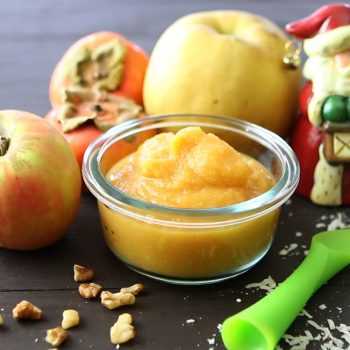 Homemade simple and delicious recipe
Homemade simple and delicious recipe 
